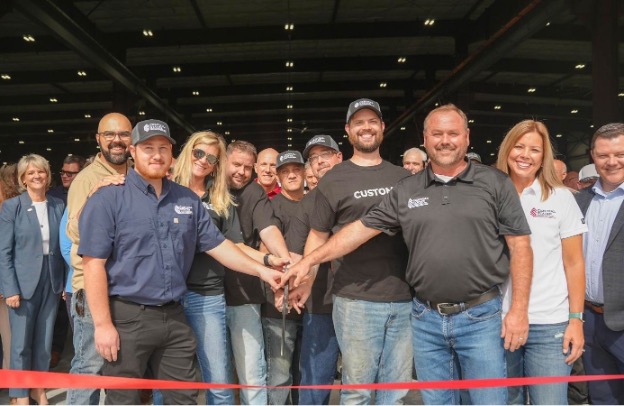RMCOEH: An Asset for Industry

March 13, 2019
Tucked in the University of Utah’s Research Park is a little known but nationally ranked resource for manufacturing and other industries in our state. It’s called the Rocky Mountain Center for Occupational andEnvironmental Health (RMCOEH).
RMCOEH is one of 18 Education and Research Centers (ERCs) across the country that are partially funded by the federal National Institute for Occupational Safety and Health. In 2018, federal evaluators approved RMCOEH for another five years of funding, giving the Utah center the highest score in the country. The UofU topped the ratings of ERCs based at Harvard University, Johns Hopkins University, and the University of Michigan among others evaluated in the same funding cycle.
EDCUtah recently met with RMCOEH director Kurt T. Hegmann, MD, MPH to get his perspective on the center and the resources it offers to businesses and other organizations in the region.
What are the main programs of RMCOEH?
First of all, we have an academic role, in that we offer undergraduate, masters, and PhD programs. We educate students who go into careers in occupational safety and health. We also offer continuing education classes to help companies inform their workers about the latest best practices. Through these courses, we have reached more than 5,000 workers and nearly 4,000 businesses in the past year.
We also conduct research and provide service in occupational medicine, industrial hygiene, ergonomics and safety, injury prevention, and hazardous materials. We draw from experts across the University, from Engineering, Economics, Medicine to Mining.
What is your service area?
We serve companies and organizations in Utah, Montana, North Dakota, South Dakota, Wyoming, Idaho and Colorado. It’s a big region to support, so one of our strategic initiatives is to increase our capabilities in distance learning.
What are the RMCOEH programs that businesses find most useful?
That’s really a question of breadth and depth. The continuing education courses touch the most companies and organizations, and require only the commitment of sending staff to training courses on topics such as hazardous substance handling or noise abatement.
Some of our other programs focus on specific issues at specific companies, and can really go in depth. These services can range from analyzing and redesigning workflow on a factory floor, to improving training and apprenticeships to minimize work-related injuries.
In these more customized engagements, we can field a multi-disciplinary, graduate-level Capstone project to examine an issue, deconstruct it, cost out a solution, and help the company implement the changes. While there’s a significant investment by the company in time, there’s no financial cost associated with RMCOEH. These Capstone teams include masters, PhD students and MD residents with three-member multidisciplinary faculty leadership. The teams strive to provide solutions that are practical, cost-effective and results-based.
Lastly our research studies are useful at the industry level. We have done extensive work in analyzing safety in the trucking industry. We’ve also published findings on the relationship between leisure time exercise, low back pain and effects on lost time at work. Another recent paper describes factors related to slips, trips and falls among home healthcare workers. These all can better inform different industries on how to reduce injuries, lower costs, and increase productivity.
Are these programs suitable for large or small organizations?
Both. Small and medium-sized businesses and organization soften need help in the basics, such as assessing risks. We can address those in on-site “walkthough” surveys and other services. Larger companies tend to need help in specialized areas, and in staying abreast of the latest research.
How do companies and organizations participate in these programs?
We would love to have more hands going up! Contact us at https://medicine.utah.edu/rmcoeh






